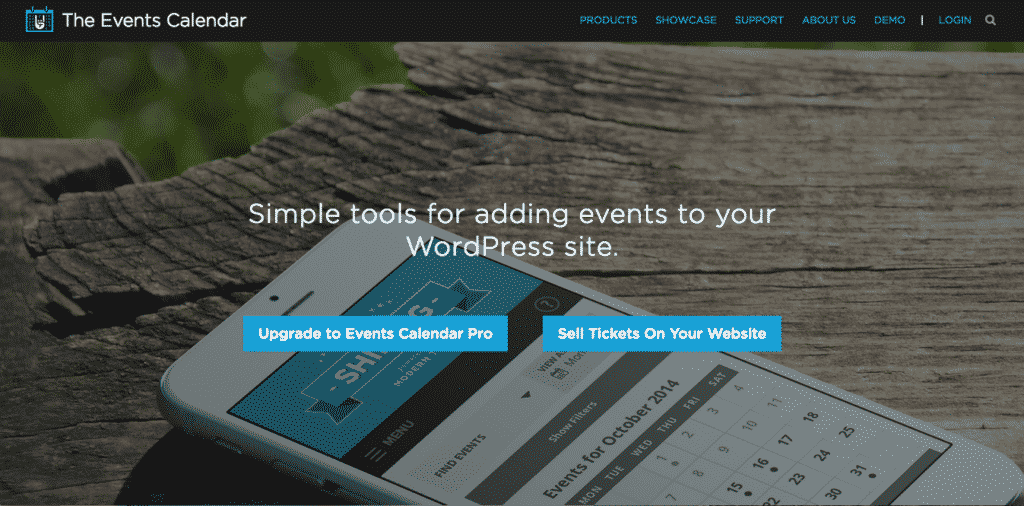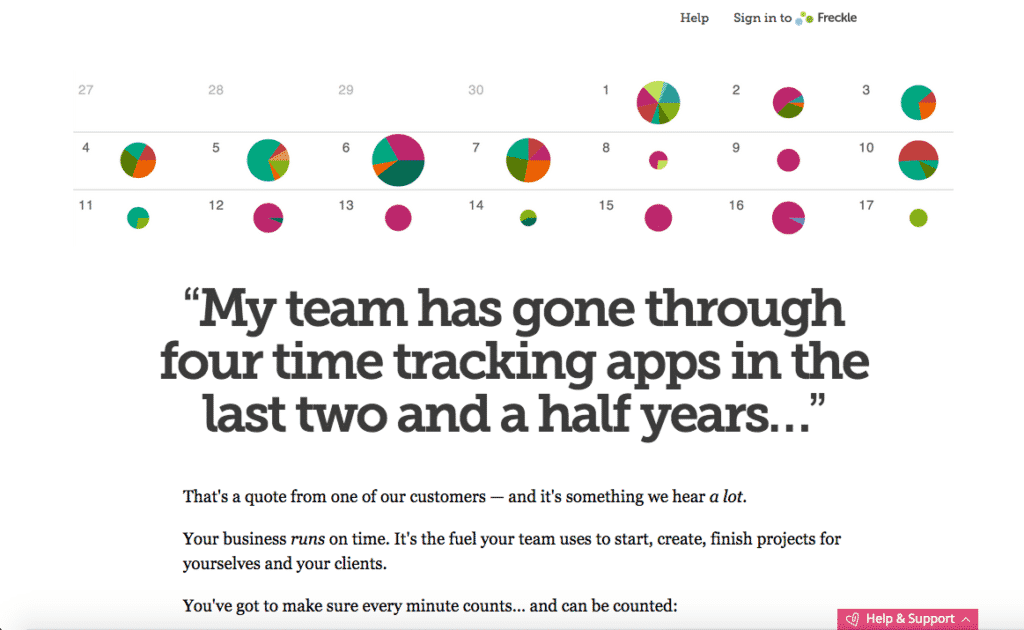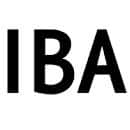Up until now I’ve talked a lot about starting a freelance business. I covered steps needed to register it, set up rates (and how to actually get paid on time), develop processes to help you run a business and a lot more.
That’s a lot of useful advice.
But today, I’d like to cover something new. It’s a challenge many veteran freelancers face; the hurdle of scaling a freelance business.
Let’s explore of few ideas.
1. You Could Productize Your Service
I know this term may seem counterintuitive but bear with me.
Productizing a service means taking something you already offer and packaging it to look like an off-the-shelf product with a standardized list of features, options, pricing and turn around time.
An SEO consultant, for instance, could offer a website optimization package. A digital marketer could offer an Adwords management package. A writer, blogging packages and so on.
Here are some examples of freelancers who have productized their service:
- Joost de Valk offers website review packages that help customers improve their website optimization.
- Dan from WP Curve offers WordPress support services.
- Richard from Snowbistro offers content writing packages.
- Kurt Elster, an ecommerce consultant offers a Website Rescue service for Shopify store owners.
But how will productizing help me scale my business?
For one, because it will free you from the dollars-for-hours economy.
You see, most freelance businesses operate on a very simple premise: they get paid for every hour spent working on a client’s project.
And there is nothing wrong with this approach. But it does have limitations.
This thing is, when you bill per hour, sooner or later you’ll hit a ceiling of what you can actually earn. After all, there are only so many hours you can spend working. And some of them you’d have to spend on unbillable admin tasks like bookkeeping, emailing clients, sales, marketing and others.
Katherine Reynolds Lewis estimates that these unbillable hours consume as much as 30% of your working time. And so, if you’re working 40 hours per week, you’d get paid only for 28 and spend the remaining 12 running your business.
Therefore, your income is capped by what you can charge for those 28 hours.
Of course, you could increase your hourly rates and earn more without increasing the number of billable hours. But there is a cap as to how much you could charge, too. And it takes a lot of effort, upselling and marketing to be able to justify higher rates.
Productizing a service can free you from this pay-per-hour model.
When you start offering productized services, you’re no longer limited by the number of billable hours you spend working. That’s because a productized service – if done right – is systematized and can be processed and replicated quickly (or even by someone with minimal training).
Buying productized services is beneficial for clients too.
Often times, freelancers quote on an hourly basis, providing an estimate of the amount of time needed to complete a project.
That’s all well and good until the project goes out of scope. It results in frustrated clients and tense conversations.
Productized services, on the other hand, work to eliminate this problem.
Instead, both you and the client agree to an outcome, and a price before any work is completed. The client is happy because they’re paying for the completion of a task rather than hours to complete it, and you as the freelancer benefit because you have a fixed amount you’ll earn – regardless of how long it takes.
The one obvious point counter to this argument is that you must know how long a productized service will take to complete, and set rigid parameters around it. Otherwise, you could run the risk of accepting projects that are doomed to go out of scope.
Resources:
- Great podcast by Pat Flynn on how to productize a service based business.
- Brian Casel’s introduction to productized services.
- Lessons Brian Casel learned building a productized service.
2. Launch Digital Products
If productized services seemed outside of your comfort zone, no problem. Productizing services isn’t for everybody.
After all, it still means actively working with clients. And even if you outsource some (or all) of the service, you still need to oversee it.
But your plan might be to step away from the business for a while. Take a much-needed vacation. Or work on other passion projects.
If that’s the case, you could develop and launch digital products and sell them to your audience. These products could include eBooks, online courses, plugins, website templates, document templates, workbooks and much more.
Many of these could be a by-product of your service.
Just take a look at Modern Tribe, a web application firm. In working with clients on projects, they stipulated in their contracts that their code could later but used in other Modern Tribe projects, or sold as standalone plugins.
And as a result, they launched The Events Calendar WordPress plugin and built an additional stream of income for their business. Today they have a suite of WP plugins and a growing staff.

There are many other examples of freelancers who converted the work they already did or knowledge they had into successful digital products.
- Web designer Paul Jarvis, for instance, used his knowledge of freelancing to launch the Creative Class online course.
- Bob Bly, one of the best copywriters of our time shares his knowledge and experience via eBooks he sells through his site.
- Ed Gandia, another great copywriter, offers various online writing courses.
- Joana Wiebe sells outstanding eBooks.
- Joost de Valk developed WordPress plugins, one of which has become the most popular SEO plugin.
When considering launching digital products, I recommend you follow a fellow freelancer’s Amy Hoy’s advice: do a tiny product first. Read her reasoning behind it here.
Resources:
- The Lean Startup – book by Eric Ries
- Running Lean – a book by Ash Maurya
3. Manufacture Physical Products
If you have a knack for producing physical products or a great product idea, why not turn it into a business, too?
Physical products offer a similar opportunity to scale your business as their digital counterparts. And, you could easily turn your passion or even job into a successful manufacturing business.
Aaron Mahnke, a freelance designer turned his passion for design and productivity into Frictionless Tools, a company offering paper productivity tools like stationery, write pads etc.
Brad Dowdy, a pen addict at heart runs Nock Co, producing beautiful pens, stationery, pen cases and more.
Providing that the demand for the product is high, and you’ve found a niche to support it, you could build a successful company.
Just like Aaron Draplin.
You may not have heard of him but you’ve probably heard of Field Notes. Draplin, originally a designer, started to produce these notebooks as gifts because he couldn’t find a notebook he liked. Today, Field Notes are available in over 1,400 stores and sell tens of thousands of copies each year.

The downside of producing physical products is that it requires more investment than launching their digital counterparts. At the same time though, it provides an opportunity to build a worldwide brand and create a massive revenue stream for your business.
Resources:
- 3 interviews with entrepreneurs who have launched successful physical products.
- The beginners guide to building a physical product by Quickbooks.
- Needwant’s overview of the process of launching a physical product.
- Sean Ogle’s run through of running a product based business from anywhere.
4. Develop Recurring Revenue
I’ve talked about recurring revenue at length here on Freelance Business Guide and for good reason. It’s one of my favorite ways to scale a business. It’s also exactly what I did to grow my company Business System from a freelance operation to 3 full-time employees and 2 freelance contractors.
I call this method Stacking Pancakes. And in a nutshell it works like this:
With stacking pancakes, you sign up customers to recurring revenue packages. On the outset, this method looks similar to offering a productized service. However, with a recurring income, the scope of work provided doesn’t have to be limited to a packaged, off-the-shelf product.
Your recurring package could include various services that help deliver a specific result over time.
Stacking Pancakes method works particularly well for services that require services to be performed each month (i.e. SEO, blogging packages, website updates, Adwords management, etc.) and thus allows you to take on more clients.
There is another benefit of the recurring revenue model.
It allows you to pull back from the daily implementation of our services so you can focus on other efforts to scale your company.
Resources to help you learn more:
- You can read my full-length article about Stacking Pancakes and the recurring revenue business model.
5. Develop a SaaS Software
With a proper technical background, you could convert your knowledge and experience into a Software as a Service (SaaS) product.
And let’s face it:
SaaS can be a lucrative way to create a predictable income.
Just like productized services or recurring revenue model, SaaS generates consistent monthly income. Unlike those however, you only sell the product and you’re not involved in delivering any direct services to your clients.
Many successful freelancers have turned their passion for software into business:
Designer and developer Amy Hoy turned her experience into Freckle, a time tracking app for freelancers.

Scott Krager, a former SEO consultant launched Authoritylabs.com, a rank tracking software.
MOZ, by far the leaders in SEO software started out as a small web agency. So did 37signals, creators of Basecamp. Intercom was originally devised by Contrast, a web development studio from Ireland.
Developing software products however requires an in-depth technological background. Or at least wads of cash you could spend on getting it done.
If these aren’t a problem, then entering the SaaS niche could prove a profitable way to expand your business.
Resources:
6. Launch a Public Speaking Career
FACT: You don’t have to scale your business in size to increase its revenue.
Some freelancers, for instance convert their knowledge, experience and the gift of gab into lucrative speaking engagements.
Jay Baer from Convince and Convert is one such example. He delivers keynote speeches and charges lucrative speaker rates for every engagement. His rates reportedly range from $5,000 – $20,000 per keynote.
Money aside, public speaking is also a great way to gain new and highly reputable clients. Many companies constantly scout list of conference speakers when looking for freelancers to approach for their projects.
When combined with one of the other opportunies I’ve already discussed for scaling a freelance business, speaking engagements can be a deadly one-two punch.
Resources:
- How To Become A Successful Professional Speaker by Forbes
- How to Get Paid to Speak by Scott Berkun
7. Developing Paid Online Communities
I may be off base with this recommendations but to me paid communities are the way of the future.
Here’s the thing, many of the best and most active communities on the web now come with monthly membership fees. And once established, these communities provide scalable recurring revenue you can continue to build and develop over time.
Emilie Wapnick built a successful community around multipotentials called The Putty Tribe. And it has grown so popular that she had to begin restricting new members access.
Justin Jackson from Product People has developed an awesome community for people who want to make and sell their own products. The program is so successful, that at the time of writing this article Justin also has a waiting list for new members.
Resources:
- How to build a paid community by Mixergy
To Sum It Up…
Providing you work hard, there will come a time when you’ll be max out your work load, and yearn for the opportunity to scale your business… And, maybe step back a bit from the daily provision of services.
And, it might not be that far in the future.
As I’ve shown you, there is a number of opportunities to scale a freelance business. And when you get to do it, remember that all you need is:
- A predictable, recurring revenue. Notice that every method I listed is based on it in some way or another. Read my guide to recurring revenue here.
- Processes to run the business smoothly. Processed services can be delivered and taught quickly. I wrote more about it here.
- Clients. And that’s typically the toughest part. But whatever option to scale you choose, you will need clients to fuel your growth.
That’s it…
Keep working on your business. And when the time comes, scale it using one of the methods I mentioned.

